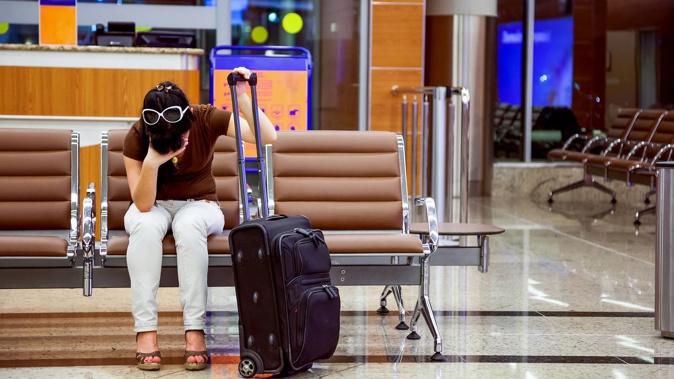
Over 130,000 items have been removed from luggage by Aviation Security (AvSec) in 2022 for breaching airlines’ conditions of carriage.
The items most often removed from travellers heading to a domestic or international flight are batteries according to AvSec operations’ Group Manager, Karen Urwin.
“Batteries are by far the most removed item,” Urwin said.
“In January 2021 new rules around batteries on aircraft came into effect and that means any type of loose batteries can’t travel in your carry-on luggage. The batteries need to be in their original packaging or ‘sealed’ in a way that prevents the two ends from connecting, such as taping over them.”
Following batteries, the most commonly removed items were ‘sharps’ like knives or scissors, then lighters and AirPod chargers.
Of the thousands of removed items, many of them could have been carried on the plane but were put in the wrong bag. Certain items can only travel in a carry-on bag or checked luggage, so it pays to check on the AvSec website or with the airline before packing.
Other items were simply forgotten about, said Urwin.
“We see lots of weird and wonderful items at our screening points, but the most commonly removed items are everyday things that people forget are in their bags.”
Passengers were urged to check their bags before they started packing. “A common explanation for the offending item is that the passenger was unaware it was in their bag at all,” she said.
Additionally, passengers are recommended to leave novelty items that look like weapons at home. Tous like plastic guns or grenades that can be filled with water would be picked up during screening.
Items most commonly removed by airport security
- Batteries must be packed in carry-on luggage and sealed or packaged appropriately.
- ‘Sharps’. These include knives, blades, scissors, pocket-knives, multi-tools and box cutters or anything that has a ‘sharp’ element that exceeds six centimetres.
- Passengers can carry ONE lighter on their person but no blue flame lighters or flammable items like solvents or lighter fluids.
- AirPods and hearing aid chargers. Since both use lithium batteries they can only be taken in a carry-on bag.
- Power banks. Like AirPods they also use lithium batteries so can be taken in carry-on bags.
- Liquids over 100ml. AvSec say “if you can spread it, spray it or smear it, the 100 millilitre rule applies when flying internationally”. This includes typical items like shampoo bottles or toothpaste as well as foods like peanut butter, Marmite, olive oil or aerosols. Exceptions apply to mediation and baby food.
- Camping equipment. Non-reusable gas liquid cylinders are strictly forbidden while camp stoves and/or re-usable gas cylinders will likely be checked they are clean of any liquid. If you don’t have the airline’s approval the stove and cylinder will be removed. Items like tent pegs can be classed as ‘sharps’ while tree cutting wire is allowed only in your checked bag.
- Tools and power tools. Aside from being classed as ‘sharps’, any power tools or attachments must be stowed in checked luggage while their lithium batteries must be carried on. AvSec officers often remove power tools from checked bags because the battery is still attached.
- E-cigarettes. All parts of an e-cigarette must be in a carry-on bag.
- Ammunition and bullets. These items must be in a checked bag and have additional restrictions so check before you fly.
Take your Radio, Podcasts and Music with you









